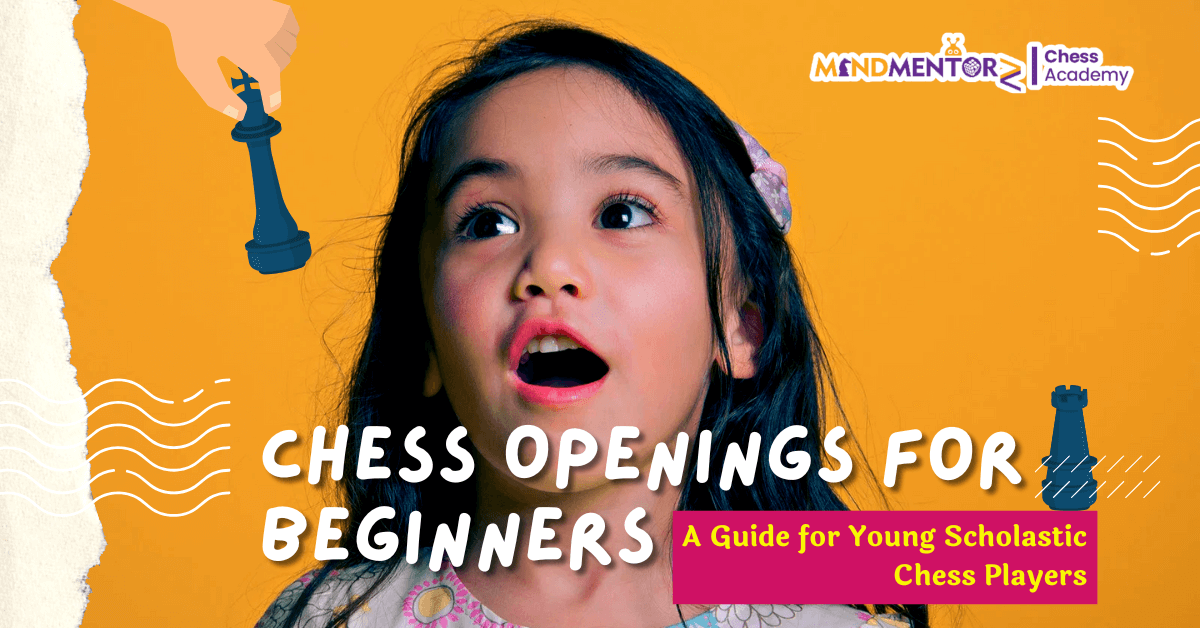
We believe that every child, whether a complete beginner or already familiar with chess, has the potential to become a strong player with the right guidance. One of the most important areas for young chess learners to master is the opening phase of a game.
But what exactly is a chess opening, and why is it so important?
Let’s break it down in a way that makes sense for kids between 5 to 16, with easy-to-follow advice on how to get started with your chess journey.
What Are Chess Openings?
In chess, the first few moves you make in a game are called the opening. This is like setting up your army for battle, getting your pieces ready for attack and defense. A strong opening gives you a good start, which can lead to a solid middle game and, eventually, victory.
For beginners, it’s important to understand that openings are not about memorizing moves. Instead, they are about understanding certain principles that help you develop your pieces and control the game.
Why Do Openings Matter?
When you begin a chess game, the board is open, and both you and your opponent have the same number of pieces. The key to winning lies in getting those pieces into strong positions. A well-played opening helps you control the center of the board, develop your pieces quickly, and make your king safe from threats.
Think of it like cricket. If your opening batsman scores well and defends confidently, your team has a better chance of setting a strong score. Similarly, in chess, if you start well, you set yourself up for success later in the game.
Basic Chess Opening Principles for Young Players
Control the Center:
- The four central squares on the chessboard ( e4, e5, d4, d5) are the most important. Moving your pawns to control these squares gives your other pieces more space to move around.
- The pawns on e4 or d4 are often used for this purpose.
- Ask yourself: “Am I controlling the center?” If yes, you’re on the right track!
Develop Your Pieces:
- Your pawns are not the only important pieces. You also need to move your knights and bishops to active squares.
- Don’t bring out your queen too early! The queen is strong but can be easily attacked if you bring her out too soon.
- Focus on getting your knights and bishops out first. They are your quick attackers!
King Safety:
- The king is the most important piece in chess. One of the first things beginners should learn is how to castle. Castling moves your king to a safe corner of the board and brings one of your rooks into action.
- Always remember: a safe king means you can focus on your plans without worrying about a sudden checkmate.
Don’t Move the Same Piece Twice:
- If you’ve already moved a piece to a good square, don’t move it again unless necessary. Use your time to develop other pieces and build a stronger position.
- The goal is to get all your pieces ready for action!
Connect Your Rooks:
- Rooks are your heavy artillery, and they work best when connected. This means moving your pieces in a way that your rooks can support each other, usually after castling.
- Once your rooks are connected, they can dominate the board.
Popular Chess Openings for Beginners
Here are a few easy-to-learn chess openings that are perfect for beginners:
The Italian Game (e4 e5 Nf3 Nc6 Bc4)
This opening is simple and effective. It focuses on controlling the center and quickly developing your pieces, especially the bishop.The Ruy-Lopez (e4 e5 Nf3 Nc6 Bb5)
A slightly advanced opening but very strong. It aims to put pressure on your opponent’s knight and build up a solid position.The Queen’s Gambit (d4 d5 c4)
This is one of the most famous openings, where you offer a pawn to gain control of the center. Many of the best players in history have used this opening, and it’s great for learning how to play a positional game.
Common Mistakes Young Players Make in the Opening
It’s okay to make mistakes! Learning from them is part of the process. Here are a few common errors that beginners often make and how to avoid them:
Bringing the Queen Out Too Early:
While the queen is the most powerful piece, moving her out early makes her vulnerable to attacks. Keep your queen safe until you’ve developed your other pieces.Ignoring King Safety:
Castling is important! If you forget to castle, your king can become an easy target for your opponent.Not Controlling the Center:
If you neglect the center of the board, your opponent will dominate the game. Always try to control the center with your pawns and pieces.
Final Thoughts for Young scholastic Chess Players
Chess is a game of strategy, and the opening is your first step in building a winning plan. By following the basic opening principles—controlling the center, developing your pieces, and keeping your king safe—you’ll find yourself in a strong position as the game progresses.
At MindMentorz Chess Academy, we encourage all our young players to experiment with different openings and find the ones that suit their style of play. Remember, practice makes progress. The more you play, the better you will become at recognizing the best moves and improving your opening strategy.
Take the Next Step with MindMentorz Today
Whether you’re just starting or looking to improve your chess skills, MindMentorz Chess Academy is here to guide you. With expert coaches, exciting monthly tournaments, and a supportive learning environment, we help children unlock their full potential on the chessboard.
Start learning, start winning—because every move counts!
